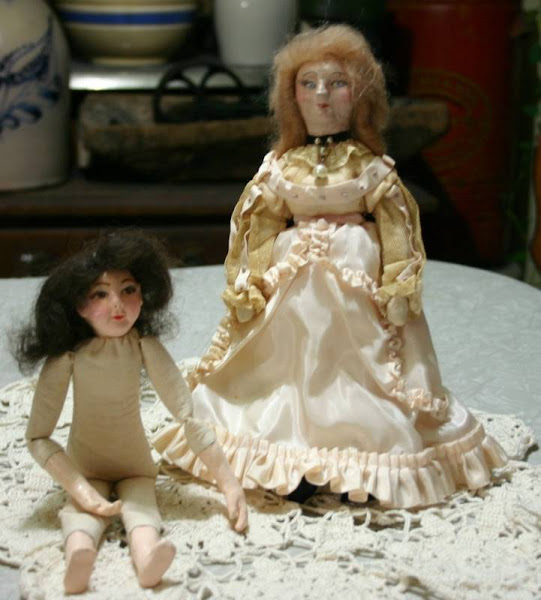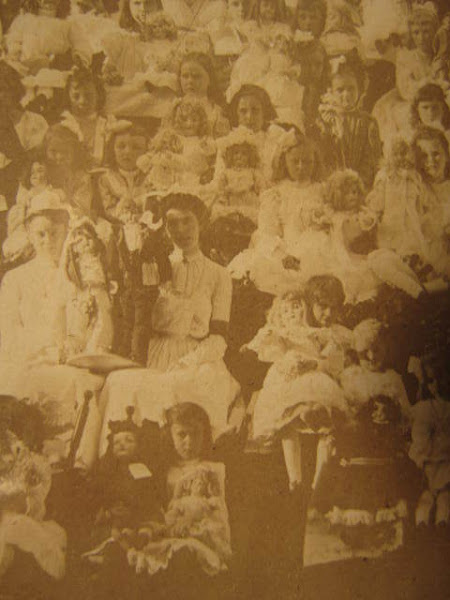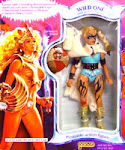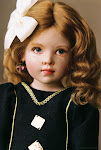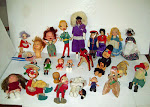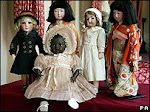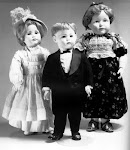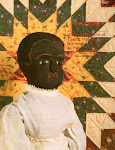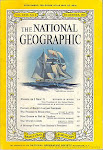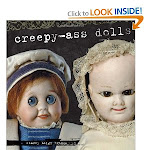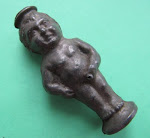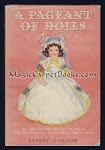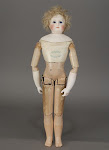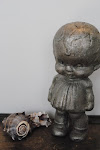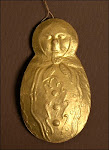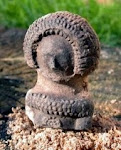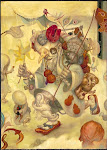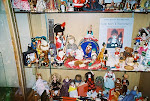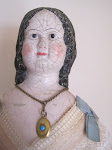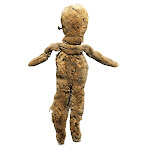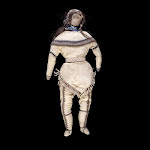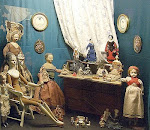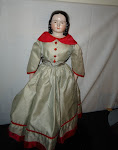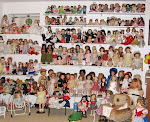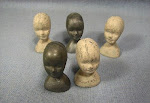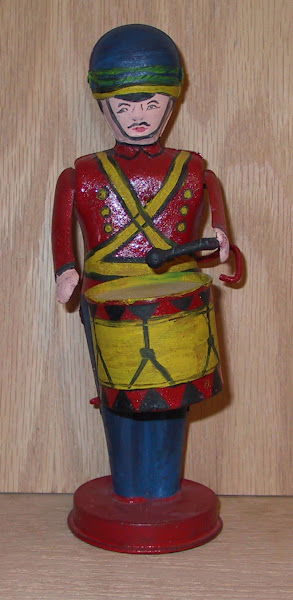Wednesday, May 28, 2014
Miss Charlotte Bronte meets Miss Barbara Pym: Maya Angelou,
Miss Charlotte Bronte meets Miss Barbara Pym: Maya Angelou,: We salute another excellent woman, Maya Angelou, and mourn her passing. I studied many a work by her, and consider her a compatriot, Eonia ...
Miss Charlotte Bronte meets Miss Barbara Pym: Maya Angelou,
Miss Charlotte Bronte meets Miss Barbara Pym: Maya Angelou,: We salute another excellent woman, Maya Angelou, and mourn her passing. I studied many a work by her, and consider her a compatriot, Eonia ...
Monday, May 19, 2014
Dolls at The Monastiraki
The Monastiraki Flea Market
I developed a taste for old dolls, even antiques, when I was five years old. I learned to love Greek Dolls when I was three, and it was also three Greek dolls that started my collection. Numerology, anyone? Well, all kidding aside, I hounded my parents to take me to antique shops and flea markets every where we went, and I could spot a Bru when I was eight years old. I knew the difference between papier mache and composition by the time I was nine (In my estimation, most recipes for composition involve wood shavings and more glue, while papier mache according to the firs grade recipe in Mrs. McAllister’s class involved library paste and newspaper strips soaked in water. You get the idea. In tribute to Mrs. Macalister, she had her own dolls and made a sock doll for me!]
So, when we went to Europe, I had to get to the Monastiraki Flea Market.
The Monastiraki is named for a 10th century church located in the area, Pantassa Church, and the name means “little monastery.” Line 1 and 3 of the Athens Metro take you there. It is a relatively safe, but there are reports of pickpockets on the Metro escalators. Be prudent as you would in any big city. There are also ruins near the flea market. It is also near Old Athens, called The Plaka, which had open air restaurants and all night cafes. Nearby, we ate fresh seafood, especially lobster. You could also order sea urchins.
My folks took me there as a surprise. Everyone had been buying me lovely costume dolls, and Greek play dolls by El Greco and Kehagias [later moved to Canada], the two big companies. My godmother, also named Ellen, gave me a 3’ hard plastic Italian Doll that had lights pinned all over her skirt. You could really plug her in. Her brother took me to a toy shop across from our favorite restaurant and bought me anything I wanted. I wanted tiny rubber East German dollhouse dolls, at about 1 inch, they were smaller than the counterparts we had at home. I could have had a Bubble Cut Barbie made for the Greek Market, too. He wanted to buy it for me, but I didn’t want to seem greedy. This just proves being nine can also mean being stupid.
My Aunt Voula gave me a beautiful 12 inch vinyl doll with blonde hair. I called her Voula, but she looked a lot like Melina Mercouri might have as a little girl. Aunt Voula was my grandma’s sister, and she was a seamstress like my grandma. So, she created a whole wardrobe for Voula doll. She also gave me a little china rabbit.
At the Monastiraki, located in Avissynias Square, Athens, I saw three antique doll heads, maybe later open mouth Jumeau or SFJB heads, maybe Armand Marseilles. They cost about 30.00 each US money at the time. Now, these are bargains, but then, it was a lot of money, though my mom almost broke down and bought one. The exchange then was the drachma; about 15 drachmas was about fifty cents US coinage, and it bought lovely souvenir dolls of cloth with wire armature, and painted cloth mask faces over a wooden form.
We did buy one of these cloth over mask faces, created as a head with a collar, of a Black woman. She has lovely side-glancing painted eyes, and a bouffant black mohair wig. Her collar is dark blue, trimmed in sequins, lace, and Greek embroidery. We completed the doll and dressed her in matching blue, embroidered Swiss fabric. I sent a photo of her to Maria Argyriades, author on Greek dolls and curator at the Beenak Toy Museum, Athens. She was a friend of my friend, Mary Hillier.
Things haven’t changed too much today at The Monastiraki. There are still tavernas, or small restaurants that serve local appetizers surrounding it. My grandfather had one of these in Calamata, and Yannis' family used to frequent it. There are no fees, and there are things for older and younger children to do at the flea market.
Those who love sightseeing will note that there is a grand view of the Acropolis behind it. For those who shops, there are still lots of shops and stalls selling dolls, souvenirs, hats, food, etc.
Monday, May 12, 2014
More Places to hear from us!
 If you love doll photos and information, visit us on our Facebook page, Dr. E's Doll Museum. I've shared dozens of new albums and photos of wonderful dols and toys. Also, visit us on Google+, where we have had over 2 million views! We have a Twitter account #Dr.E's Doll Museum and I am on Pinterest under Ellen Tsagaris. I have several boards, with one called Doll Collection. I have an author's page at Amazon.com, and one at 918studio,net, and you can find my books on alibris.com, Barnes and Noble.com, Google Books, Amazon.com [also Kindle] and Doll Pile.com. Finally, remember to visit me at Doll Collecting at Abou.com, where I'm the doll collecting guide. I also belong to many other boards on Facebook related to dolls, antiques, doll collecting, and toys. Happy Dolling!
If you love doll photos and information, visit us on our Facebook page, Dr. E's Doll Museum. I've shared dozens of new albums and photos of wonderful dols and toys. Also, visit us on Google+, where we have had over 2 million views! We have a Twitter account #Dr.E's Doll Museum and I am on Pinterest under Ellen Tsagaris. I have several boards, with one called Doll Collection. I have an author's page at Amazon.com, and one at 918studio,net, and you can find my books on alibris.com, Barnes and Noble.com, Google Books, Amazon.com [also Kindle] and Doll Pile.com. Finally, remember to visit me at Doll Collecting at Abou.com, where I'm the doll collecting guide. I also belong to many other boards on Facebook related to dolls, antiques, doll collecting, and toys. Happy Dolling!
Sunday, May 11, 2014
Happy Mother's Day! Over 70,000
We are over 70,000 on this blog! Thank you! Happy Mother's Day to all, and may we have peace today. We pray for the little girls lost in Nigeria, and I will soon talk about Nigerian dolls in the spirit of peace and innocence that should belong to all young girls.
Found a fantastic sale with dozens of doll parts, doll heads, antique and vintage dolls in need of repair and much more. I came away with an Alma, complete, bisque head perfect and sleeping glass eyes, a kid body for a Kestner, with the Kestner seal and stitched toes intact, another German bisque on a jointed compos body with wit and clothes. These were all under $100 or so. I bought another kid body with a damaged A & M 1894 head still attached. I found a Wendykins Alexander 8 in Germany in her box for 2.00; she needed restringing. One box of parts had four antique heads in it, one a patent washable P/M and one vintage Miss Revlon type head in it. On the last day everything was 75% off, and I found vintage hard plastic dolls and babies for 1.50, and a very good condition composition Princess Elizabeth type with clothes and wigs for 7.00, and Sunshine Family doll furniture and home, in original boxes, for 3.00 each. I was very happy to find a 16 in Minerva doll with the rare baby's head. I found the composition and wood Disney Pinocchio for 13.00, usually a 300-400 doll at auction. Years ago, I lost a bid on him and General MacArthur when they were in one lot. Now, after a little perseverance, I have both of them! I picked up some mint carnival dolls, a set of Renwal furniture, a vintage Barbie ponytail paper doll for .50 cents, and the Tutti house by Mattel for under 3.00. The red Barbie case with gorgeous original pink velvet Barbie gone and other small items in it for 3.00. An Effanbee Fluffy, 14 in., in her original Brownie costume [just like mine!] was 8.00.
It pays to stop and look. I had driven by this sale near my job for some time, and never gone it. Turns out it is run by a good friend of mine, whose mother was a lovely lady who dealt in antique dolls. I got many fine dolls from her mom at various doll shows, and my mother knew and loved them, too. Small World.
Brownie costume [just like mine!] was 8.00.
It pays to stop and look. I had driven by this sale near my job for some time, and never gone it. Turns out it is run by a good friend of mine, whose mother was a lovely lady who dealt in antique dolls. I got many fine dolls from her mom at various doll shows, and my mother knew and loved them, too. Small World.
 Brownie costume [just like mine!] was 8.00.
It pays to stop and look. I had driven by this sale near my job for some time, and never gone it. Turns out it is run by a good friend of mine, whose mother was a lovely lady who dealt in antique dolls. I got many fine dolls from her mom at various doll shows, and my mother knew and loved them, too. Small World.
Brownie costume [just like mine!] was 8.00.
It pays to stop and look. I had driven by this sale near my job for some time, and never gone it. Turns out it is run by a good friend of mine, whose mother was a lovely lady who dealt in antique dolls. I got many fine dolls from her mom at various doll shows, and my mother knew and loved them, too. Small World.
 During the late 60s and through the 70s, there was a series of postcards that featured antique dolls photographed next to prize winning flowers and plants. Lovely china heads posed next to award winning tomato plants, and delicate Parians were juxtaposed with delicate rose bushes. There was also a book published. The dolls and the plants were art of one woman's collection. The postcards had lots of fans. They show up even today occasionally in the column Mr. Barry Mueller writes in his family magazine "Doll Castle News" where he writes a column featuring postcards and dolls.
Maybe this is why I have always loved flowers, and dolls made from them and other natural plants, fibers, and seeds. You can literally "grow your own dolls" if you go this route. I still have my first hollyhock doll, made by my mom for me from a bloom harvested in Battle Mountain, Nevada, many, many ears ago. Mom also managed to embroider tiny French knots on the flower to create a face.
Pansies and violas, even little violets captured my imagination. They looked like little faces, and snap dragons with their mouths that moved like a ventriloquist dummy's intrigued me. I liked making pictures and flower people using them by ironing them between sheets of wax paper. Hint: if you have allergies, never use goldenrod in these experiments. The heat from the iron accentuates the scents of the goldenrod, and you have instant allergies.
I loved the name Queen Anne's Lace because, of course, I thought of Queen Anne dolls.
Mandrake root often resembles human form, and is mentioned in books on doll histories like "Dolls" by Max von Boehn, and in poems by Metaphysical Poet John Donne ("Ask not for whom the bell tolls; it tolls for thee.".
When I was little, I also made cornhusk dolls, dolls from broom straws, dolls and animals from milkweed pods, dolls from whittled sticks [Dad's specialty], and I read about dolls made from acorns and walnuts. Miss Hickory, created by Carolyn Sherwin Bailey, is about the most famous of these. There was also a story about a small fairy who was looking for a house in which she would live, but she kept getting evicted from old hornets nests, beehives, glass jars, until a little girl who believes in her lets her live in her doll house. Now, we would create a fairy garden or terrarium for her. I always set up a few of these and love Christmas Village figures to populate them. I have a gnome village set up under a fairy door attached to a mighty oak, and many garden figures which I consider my "outdoor" doll family. I make ponds with bits of mirror and trees from interesting twigs. I use lots of small rocks and plants as well, and love various railroad accessories in different scales.
Later, I got a "real" fairy house made from a very little, hollowed out gourd. I had also read about gourd dolls in books by Lois Lenski, and even grew my own gourds one year so I could make more dolls. At the California Renaissance Faire one year I bought a Beefeater made from a gourd. I have a scarecrow and maiden with gourd heads, and many small dolls and animals from Peru made of etched gourds. I even have a doll purse made from a gourd. At our annual gourd festival, I saw a wonderful, jointed one of a kind doll made entirely of gourds. You wouldn't have known it to look at her.
Pumpkins, of course, are sort of special gourds/squash. They are ephemeral, and don't last, but I do have a couple small, painted and preserved pumpkins that have lasted. They can also be carved or mad from realistic latex and plastic pumpkins sold in craft stores during the fall for just this purpose.
Carving pumpkins are also among my favorite things to plant because I get to create Jack O' Lanterns from them, and scarecrows if the mood takes me. These kissing cousins of folk dolls intrigue me. They are often reproduced in clay and papier mache, and there are antique versions, and contemporary versions by D. Blumchen, and Bethany Lowe, two name just two artist workshops that make them.
Also related to the harvest are corn dollies, often made in abstract circular shapes associated with fertility goddesses, Midsummer Straw men, often life-sized from Scandinavia, Swedish Tomte or elves, and plaited Swedish goat ornaments. Cornhusk dolls are important in Native American doll history and in early American childhood history. Corncobs also make interesting dolls, and these were made famous by Susan, Laura's corncob doll from "Little House in the Big Woods." I loved making these, and got an A for one I did in art class. Many examples exist, and I saw a wonderful small Christmas Tree at Nieman Marcus one year that was completely decorated with miniature corncob dolls dressed in dyed colors of husk.
Cornhusk dolls are also made in Mexico and South America, and dolls of plaited wicker come from Mexico as well.
Some Native American Dolls are also made of basket woven fibers and are dyed. Others are made of dried apples. Many artists make dolls from dried apples and pears; my most macabre example lies in her own miniature casket.
I recently bought an artist's doll made of seeds, nuts, and fibers on eBay. The doll was made by Marie Gleeson, and came MIB. She was made in the Bermuda. Hawaiian dolls are made of palm fiber, and some from coconuts.
Kimport's dolls featured many dolls made of natural plants and seeds in "Doll Talk" over the years. these are still great resources and appear frequently on eBay.
Kimport also featured antique dolls that were made in the style of Kate Greenaway, and bonnet heads of unpainted bisque that wore flowers on their molded hair as hats.
This year, I planted marigolds, pansies, geraniums, black velvet petunias, primroses, chocolate mint, lemon basil, cinnamon basil and more. I am coaxing wildflowers from seeds, and closely watching my black columbine and hollyhocks, which are perennials. I have tried sunflower seeds, often the inspiration for felt dolls or dolls dressed like models for Anne Geddes. Many dolls have been named for fruits and flowers, from Veggie Tales, to Strawberry Shortcake and friends, Daisy Quant, Shrinking Violet, Victoria Plum, etc. One year, I'll grow my own flax to spin into cloth for doll projects, and consult my favorite encyclopedia article on dolls, the 1956 World Book, Volume D, to make Swedish birch bark dolls and acorn dolls. There are more ideas on my blog, "Dr. E's Greening Tips for the Common Person."
May you have happy hardening and doll collecting adventures this summer. As for me, I may start my long awaited project of creating a set of flower paper dolls called "Herb's Daughters."
During the late 60s and through the 70s, there was a series of postcards that featured antique dolls photographed next to prize winning flowers and plants. Lovely china heads posed next to award winning tomato plants, and delicate Parians were juxtaposed with delicate rose bushes. There was also a book published. The dolls and the plants were art of one woman's collection. The postcards had lots of fans. They show up even today occasionally in the column Mr. Barry Mueller writes in his family magazine "Doll Castle News" where he writes a column featuring postcards and dolls.
Maybe this is why I have always loved flowers, and dolls made from them and other natural plants, fibers, and seeds. You can literally "grow your own dolls" if you go this route. I still have my first hollyhock doll, made by my mom for me from a bloom harvested in Battle Mountain, Nevada, many, many ears ago. Mom also managed to embroider tiny French knots on the flower to create a face.
Pansies and violas, even little violets captured my imagination. They looked like little faces, and snap dragons with their mouths that moved like a ventriloquist dummy's intrigued me. I liked making pictures and flower people using them by ironing them between sheets of wax paper. Hint: if you have allergies, never use goldenrod in these experiments. The heat from the iron accentuates the scents of the goldenrod, and you have instant allergies.
I loved the name Queen Anne's Lace because, of course, I thought of Queen Anne dolls.
Mandrake root often resembles human form, and is mentioned in books on doll histories like "Dolls" by Max von Boehn, and in poems by Metaphysical Poet John Donne ("Ask not for whom the bell tolls; it tolls for thee.".
When I was little, I also made cornhusk dolls, dolls from broom straws, dolls and animals from milkweed pods, dolls from whittled sticks [Dad's specialty], and I read about dolls made from acorns and walnuts. Miss Hickory, created by Carolyn Sherwin Bailey, is about the most famous of these. There was also a story about a small fairy who was looking for a house in which she would live, but she kept getting evicted from old hornets nests, beehives, glass jars, until a little girl who believes in her lets her live in her doll house. Now, we would create a fairy garden or terrarium for her. I always set up a few of these and love Christmas Village figures to populate them. I have a gnome village set up under a fairy door attached to a mighty oak, and many garden figures which I consider my "outdoor" doll family. I make ponds with bits of mirror and trees from interesting twigs. I use lots of small rocks and plants as well, and love various railroad accessories in different scales.
Later, I got a "real" fairy house made from a very little, hollowed out gourd. I had also read about gourd dolls in books by Lois Lenski, and even grew my own gourds one year so I could make more dolls. At the California Renaissance Faire one year I bought a Beefeater made from a gourd. I have a scarecrow and maiden with gourd heads, and many small dolls and animals from Peru made of etched gourds. I even have a doll purse made from a gourd. At our annual gourd festival, I saw a wonderful, jointed one of a kind doll made entirely of gourds. You wouldn't have known it to look at her.
Pumpkins, of course, are sort of special gourds/squash. They are ephemeral, and don't last, but I do have a couple small, painted and preserved pumpkins that have lasted. They can also be carved or mad from realistic latex and plastic pumpkins sold in craft stores during the fall for just this purpose.
Carving pumpkins are also among my favorite things to plant because I get to create Jack O' Lanterns from them, and scarecrows if the mood takes me. These kissing cousins of folk dolls intrigue me. They are often reproduced in clay and papier mache, and there are antique versions, and contemporary versions by D. Blumchen, and Bethany Lowe, two name just two artist workshops that make them.
Also related to the harvest are corn dollies, often made in abstract circular shapes associated with fertility goddesses, Midsummer Straw men, often life-sized from Scandinavia, Swedish Tomte or elves, and plaited Swedish goat ornaments. Cornhusk dolls are important in Native American doll history and in early American childhood history. Corncobs also make interesting dolls, and these were made famous by Susan, Laura's corncob doll from "Little House in the Big Woods." I loved making these, and got an A for one I did in art class. Many examples exist, and I saw a wonderful small Christmas Tree at Nieman Marcus one year that was completely decorated with miniature corncob dolls dressed in dyed colors of husk.
Cornhusk dolls are also made in Mexico and South America, and dolls of plaited wicker come from Mexico as well.
Some Native American Dolls are also made of basket woven fibers and are dyed. Others are made of dried apples. Many artists make dolls from dried apples and pears; my most macabre example lies in her own miniature casket.
I recently bought an artist's doll made of seeds, nuts, and fibers on eBay. The doll was made by Marie Gleeson, and came MIB. She was made in the Bermuda. Hawaiian dolls are made of palm fiber, and some from coconuts.
Kimport's dolls featured many dolls made of natural plants and seeds in "Doll Talk" over the years. these are still great resources and appear frequently on eBay.
Kimport also featured antique dolls that were made in the style of Kate Greenaway, and bonnet heads of unpainted bisque that wore flowers on their molded hair as hats.
This year, I planted marigolds, pansies, geraniums, black velvet petunias, primroses, chocolate mint, lemon basil, cinnamon basil and more. I am coaxing wildflowers from seeds, and closely watching my black columbine and hollyhocks, which are perennials. I have tried sunflower seeds, often the inspiration for felt dolls or dolls dressed like models for Anne Geddes. Many dolls have been named for fruits and flowers, from Veggie Tales, to Strawberry Shortcake and friends, Daisy Quant, Shrinking Violet, Victoria Plum, etc. One year, I'll grow my own flax to spin into cloth for doll projects, and consult my favorite encyclopedia article on dolls, the 1956 World Book, Volume D, to make Swedish birch bark dolls and acorn dolls. There are more ideas on my blog, "Dr. E's Greening Tips for the Common Person."
May you have happy hardening and doll collecting adventures this summer. As for me, I may start my long awaited project of creating a set of flower paper dolls called "Herb's Daughters."
Tuesday, May 6, 2014
Another Great Rendezvous Auction May 12th by Theriault's
Here is a wonderful opportunity to buy HP and early vinyl dolls including Ginny, Wendy, Cissette, Whimsey, Vintage Barbies and more. Online bidding is accepted. Please see below from Theriault's:
To see all of the dolls
in the May 12th auction,
click here.
Theriault’s Rendezvous, Monday Night at the Auctions, are conducted at Theriault’s headquarters office in Annapolis, Maryland. Due to space restrictions, attendance is limited to 10 guests (please call to reserve a seat). Live online bidding, absentee bidding and live telephone bidding are available. Plan in advance, get registered, and when the auction is set to begin – 7 PM EDT – click the audio/video on button. And get set for an hour of fun. For technical help with bidding live online call Proxibid toll free at Theriault’s Premier Line at 855-264-8262.
Join Stuart Holbrook, Luke Theriault and Florence Theriault for a fun and fast and fact-filled one-hour auction of great antique dolls. Watch Luke roll his eyes while Florence cites a doll factoid. Watch Florence grow impatient at Stuart’s banter. Just have fun and maybe bring home a doll. The dolls are all available for viewing and bidding online. You can leave pre-bids, you can absentee bid, or you can make a reservation to bid by telephone at the actual time of the auction. Or you can be there online when the fun begins and watch the live audio/video feed.
--------------------------------------------------------------------------------
To receive notice of Theriault's auctions, go to www.theriaults.com and register to receive email notices. If you are planning a visit to Annapolis, call Theriault’s at 410-224-3655 or email info@theriaults.com to check the schedule and plan to attend in person.
Thursday, May 1, 2014
Exploring a Favorite Flea Market
Review: Eagle Estate Brokers [EEB] Flea Market
The Bottom Line: EEP opens the last Friday/Saturday of each month, and on special occasions. Owner Jill Bolden opened with her late business partner Frieda Quinlan in 1994, has been running her indoor flea market since ever since. EEB is going strong and wonderful place to hunt for collectibles.
Below are some quotes from the EEB Facebook Page, just to give you an idea of their fantastic inventory:
“We have lots of craft/jewelry/beads supply stuff for sale this month. Also have a Van Briggle vase for sale. We still have lots of good bikes for sale $40.00 or less.”
“We have another big box of LP's and a box of 45"s plus lots of candle holders, rolls of fabric and lots of new stuff. Small display case, 48" wide, 18" deep.”
The flea market is located in a historic neighborhood in the old Eagles
Fraternal Order building. The entire first floor is divided into booths, many consigned to vendors. Jill is currently looking for a new vendor; check her Facebook Page.
I have had many wonderful “doll” finding adventures at EEB. There are two booths with old Barbies, vintage 60s and 70s dolls, lots of doll clothes, some made appropriately for antique dolls, doll accessories, girls’ toys, plastic doll house furniture, 70s Barbie cases and accessories, and doll parts. Many of these are under $1.00, with many in the $.25-.50 range.
Another booth specializes in craft items, including Art Deco flapper faces, vintage vinyl doll heads and parts, material, doll patterns, beads, lace, and sewing notions.
There is a booth that features many national costume dolls; recently I purchased a Marin flamenco dancer, a Polish wooden nurse, c. 60s to 70s, a Scottish doll, and a Dutch couple. Other trips, I’ve bought vintage 60s figurines, old china, antique framed law license [to decorate the rooms of my other persona!], prints, needlework supplies, and beads. I missed out on a rare, black Chrissy by Ideal.
Another display contained porcelain dolls c. 1980, a Miss Revlon type vinyl [she went home with me], reproduction antique dolls, a mechanical Christmas angel, and a cloth Betty Boop.
Doll costumers will be thrilled with the jars of beads, costume jewelry, material, and other findings.
There are many craft dolls and holiday dolls and decorations, features up front at the appropriate time.
Over the years, I have found Chinese mud figures, vintage and art dolls, many books, small original paintings, some doll themed, photographs, magazines, and doll cases at EEB.
There are tens of thousands of items, with new items featured each month. At Christmas, there is a half-price room, and during the year, other items are featured there at half price.
Scout troops will find many project options here, and Jill, mother of a Scout herself, is always willing to help with suggestions.
Other collectibles include cameras, furniture, household items, appliances and parts, some machines, lots of wooden items.
Cons: Only that she is not open every day! Jill is willing to make appointments, however, and she can be called, emailed, or FaceBooked. She is also available on Linked IN.
The celebrity-signed photos on the wall prove that EEB is well worth a trip, and it is a fun part of my travel destinations. She is located near a unique coffee shop, Rozz Toxx that uses old manikins in its décor and hosts poetry readings. Also nearby is Skellington Manor, which features an amazing Haunted House with thousands of dollars’ worth of animatronics and a Baby Doll Room with dolls of all types. Take the scaredy cat, lights on tour the last Saturday of October if you really want to see the props.
More Notes: Sara Crewe and Her Dolls
In the late Victorian era, childhood was sentimentalized and given special attention. Dolls, always reflections of their makers and their societies, began to represent little girls, and baby dolls were more common from the 1850s on. Maezel, who created the metronome, soon created the mechanism for the “mamma” doll, so that toys too became “juvenelized. “ Poor children were given another glance due to poems by The Romantics, and the growing body of sentimental literature written for children, as well as by other adult poets like Burnett, Dickens, Stowe, Kate Douglas Wiggins, E. Nesbit, Kate Douglas Wiggins, Eugene Field, and others. Lithographs of children were sweet and idealized, and poor, unfortunate children were given romantic deaths and sent straight to heaven, as in Andersen’s “The Little Match Girl” and to a certain extent, Little Eva in Uncle Tom’s Cabin and Carol in The Birds’ Christmas Carol. Sara’s life reflected contemporary belief in charity towards others, which Sara certainly practiced while she was wealthy, and even when she was poor, towards Ann and Melchisedec. Sara was more mature for her years and her time. She is a composite of Burnett’s own experiences [one is reminded of Joyce and his Portrait of the Artist as a Young Man], and early reform movements to improve the lives of children that didn’t involve class preconceptions or prejudices, work that perhaps began with reform of schools like that the Brontë girls attended and Dickens’ literary children, e.g., Tiny Tim.
The original story of Sara Crewe was written as a serialized novel in 1888 called Sara Crew or what Happened at Miss Minchin’s Boarding School, published by St. Nicholas Magazine, a periodical popular with children like Helen Keller who themselves later became famous writers. The Book A Little Princess was published in 1905. One of the most famous and appealing editions was illustrated by Tasha Tudor, who was a friend of Rumer Godden and also illustrated The Dolls House. Burnett also wrote a play, The Little Princess, and The Little Un-Fairy Princess, which seem to the basis of the Shirley Temple films. Since the book was published, there have been numerous film, dramatic, and TV adaptations, as well as various editions of the book.
ALP, according to one source, may have been inspired by Bronte’s unfinished Emma, but there are also shades of Jane Eyre and Hans Christian Andersen’s “The Little Match Girl” in the story.
As with British writer Rumer Godden, “Burnett did not begin her writing career as a children’s author, yet she seems to have stumbled onto a formula for writing for children that allowed her to be successful” (Resler 15). Some critics have argued that children’s literature gives Burnett “more reign” to show her skills as a story teller (Bixler 54 cited in Resler 15), while others claim children’s literature is less taxing for Burnett to write (Gerzina 119).
A. How cruel to take Last Doll, and why not take Emily? Resler notes Sara cannot keep LD because Crew had not paid her bill before his death. “The inclusion and loss of the Last Doll as a character magnifies the importance placed on Sara’s doll Emily and the connection she has with her before and after her father’s death” (Resler 49).
Subscribe to:
Posts (Atom)
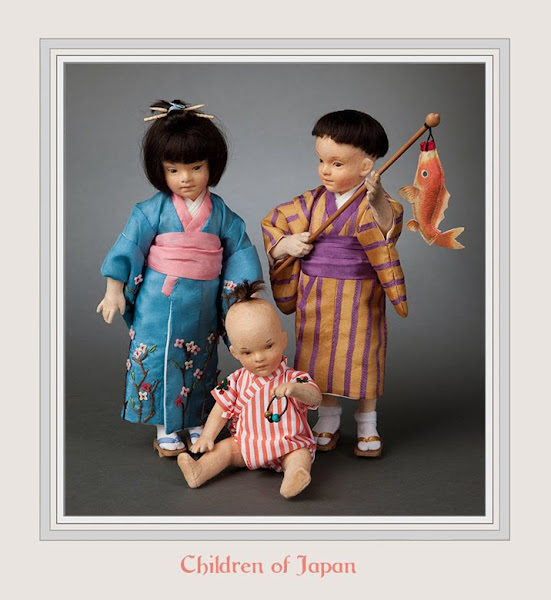

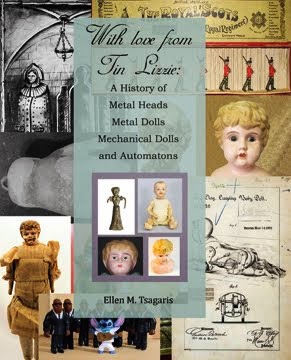
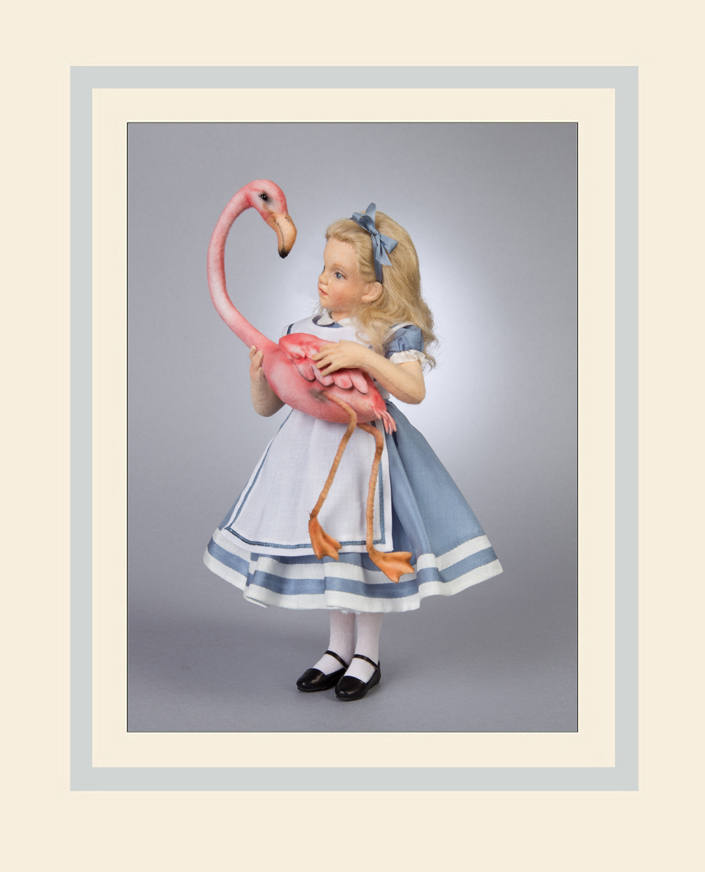


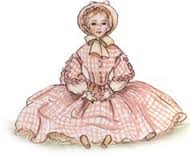


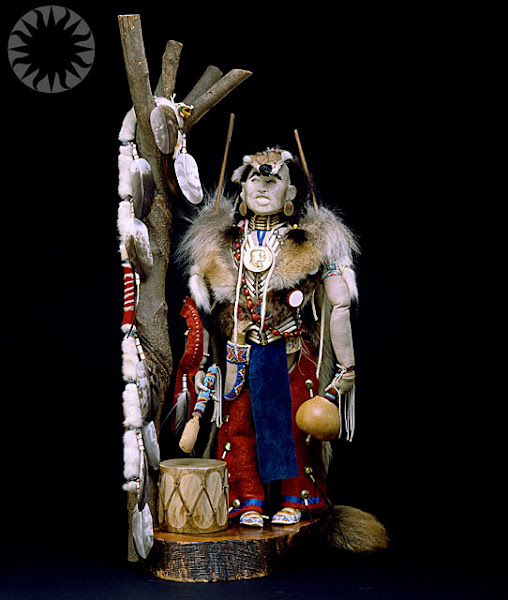
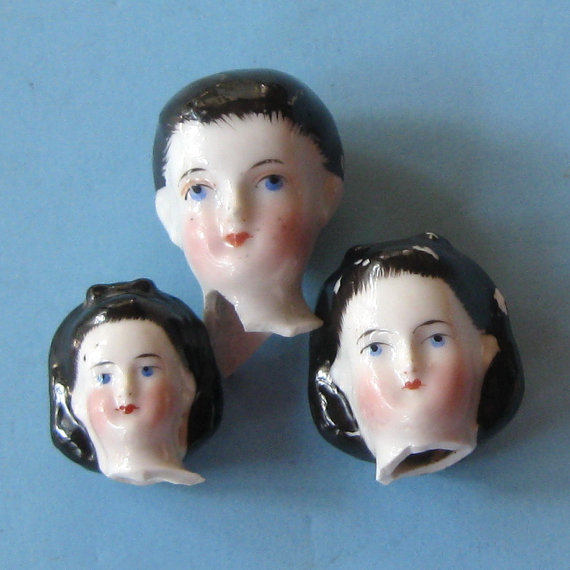
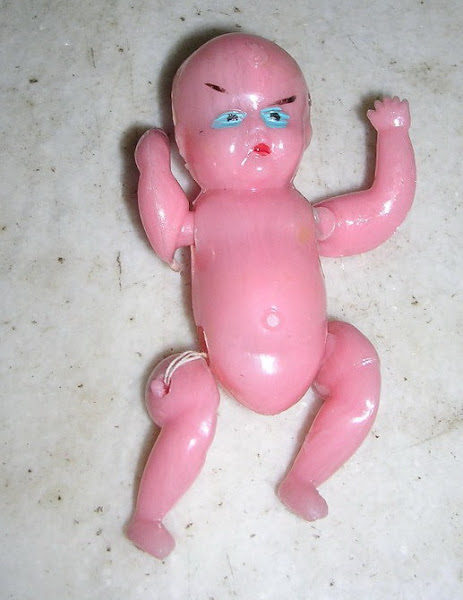
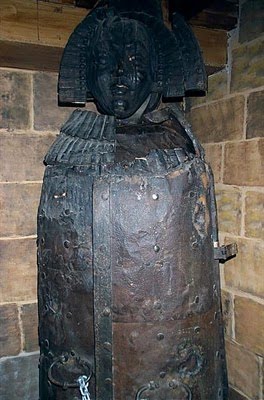

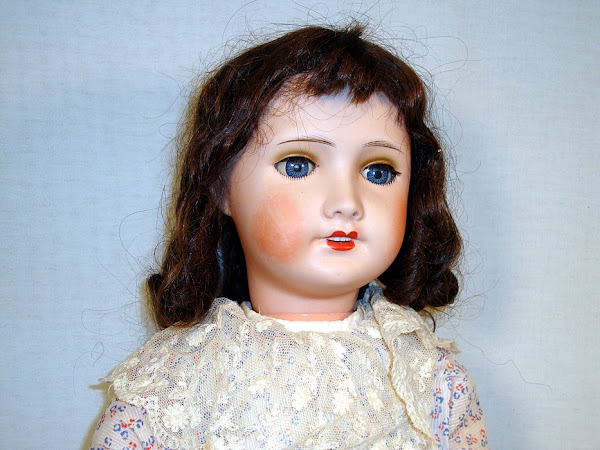



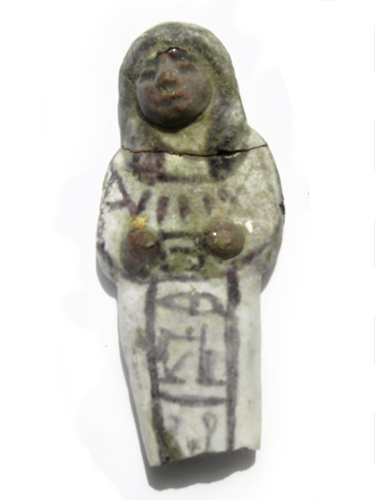
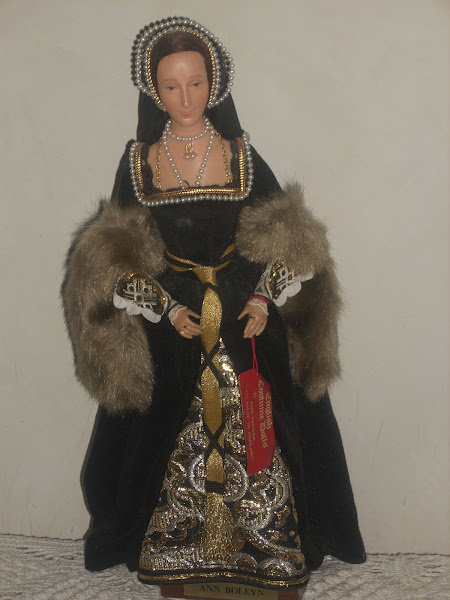





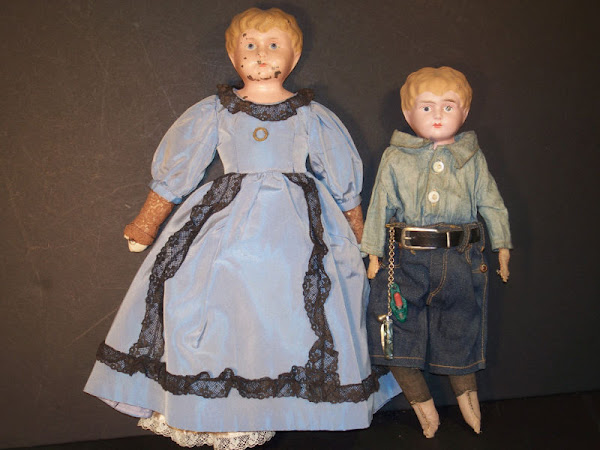


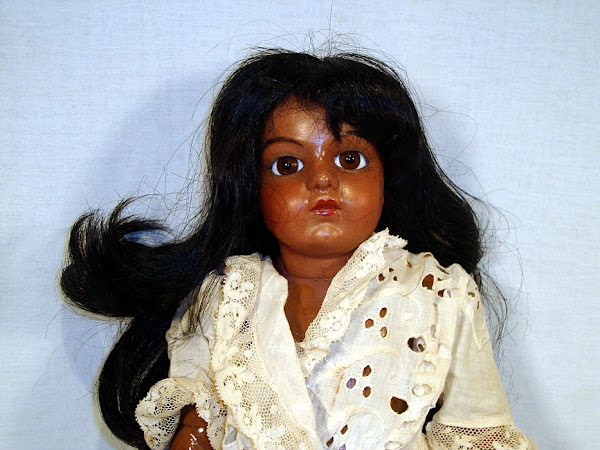
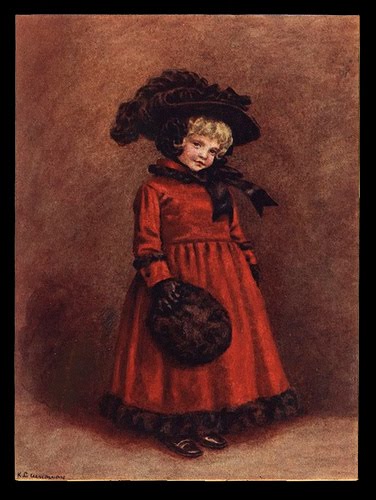

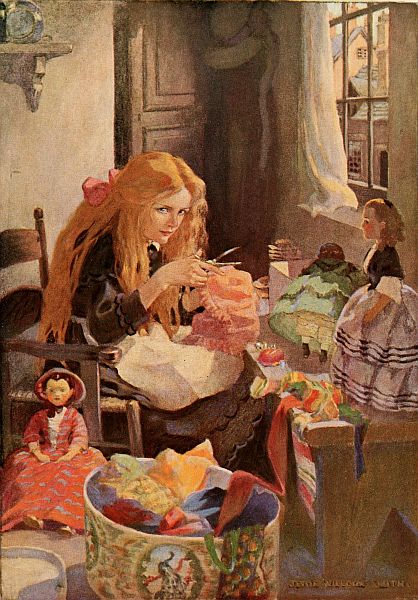


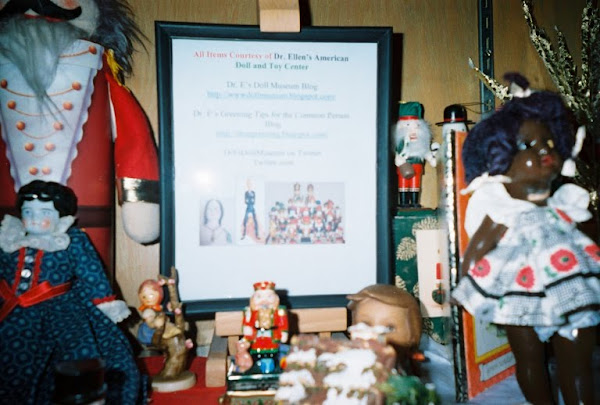






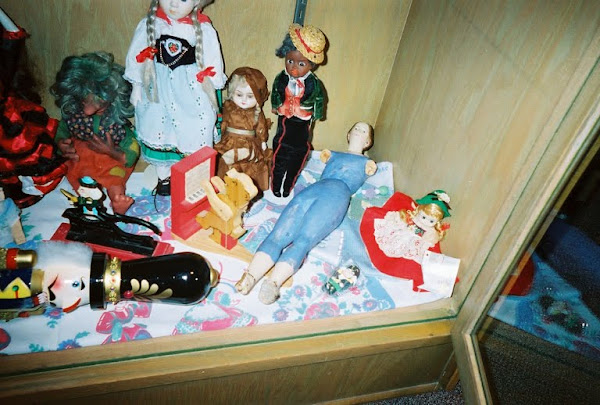
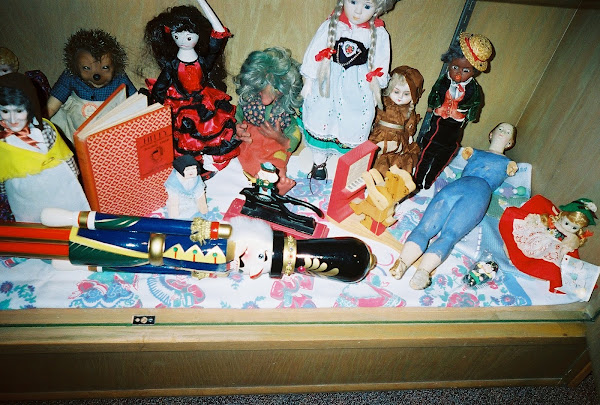
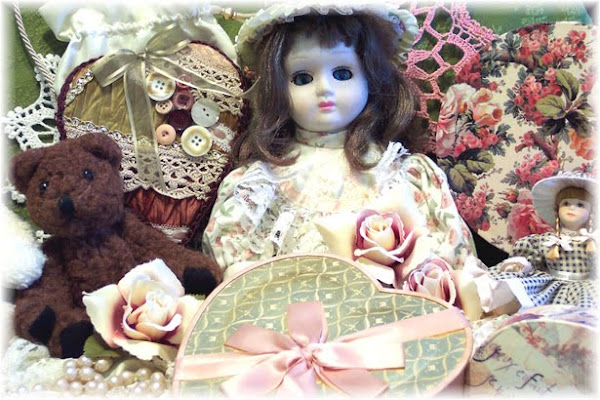
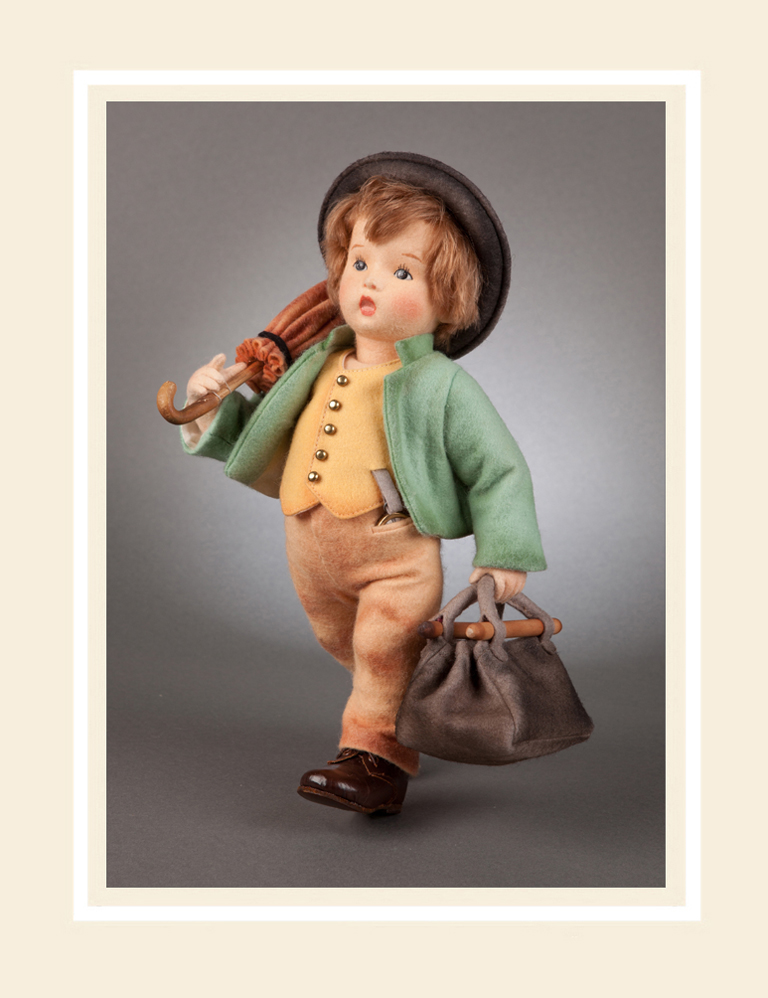

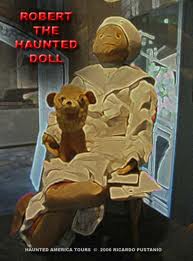

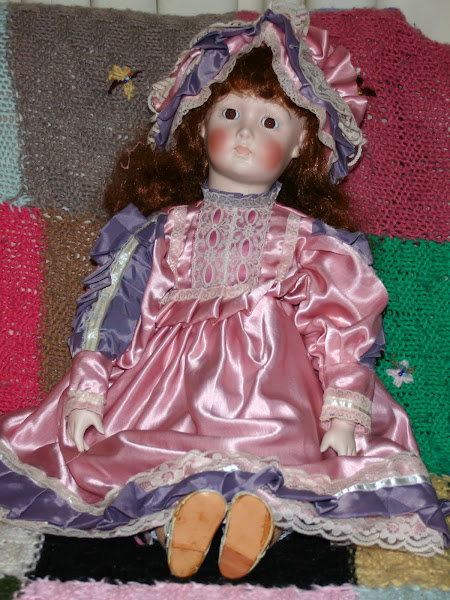
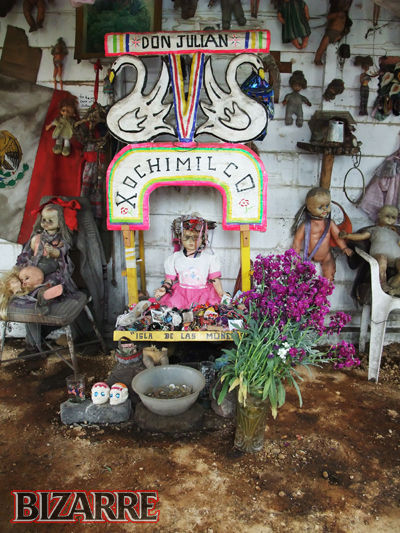
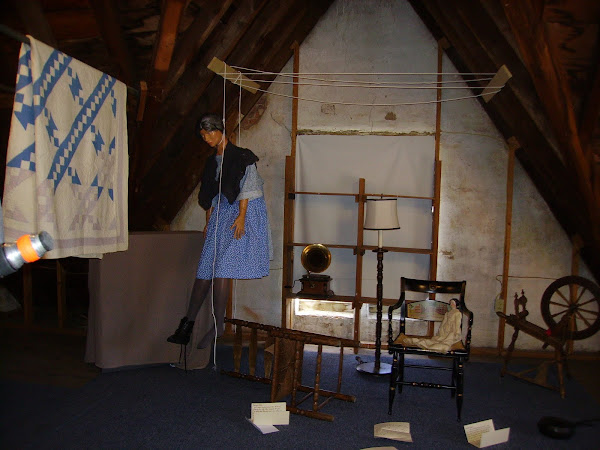
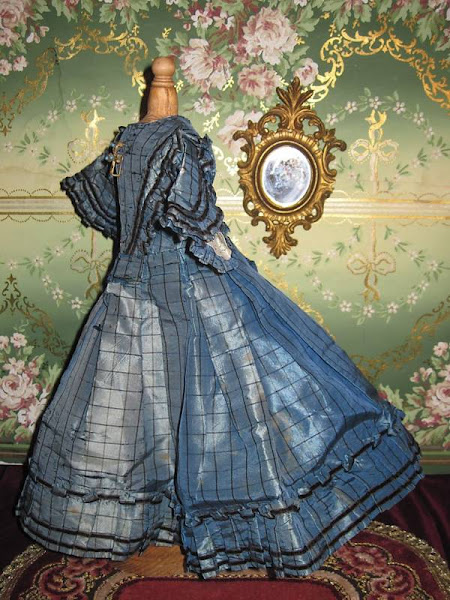wCWk~%24(KGrHqV,!h8Ew5GsnS3dBMUy3MzVPg~~_3.jpg)


